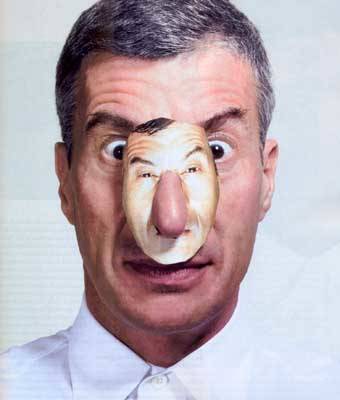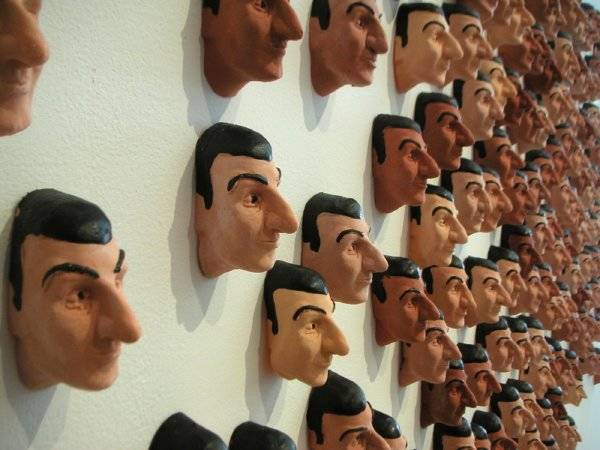All Cattelan @ the Guggenheim Museum
The Guggenheim Museum is hosting, from November 4th to January 22nd, the exposition Maurizio Cattelan: All, curated by Nancy Spector, Deputy Director and Chief Curator at the Guggenheim Museum since 1989.
The retrospective is a collection of some of Cattelan’s most significant pieces, the pieces that marked the career of the Italian artist from 1989 to 2011 and that were developed and exposed in galleries all across the world. This explain the title All. It is a retrospective of 22 years of work, which is supposed to offer a panoramic of his activity in the art world not only as an artist, but as a figure that in some ways transcends the common definitions of “artist” and that actually presents him as an activist in the art world.
The show, which is considered to be the current highlight in the contemporary art world scene in New York, collects the pieces that gave him fame not only in the art world but also with the general public. His works, when compared to other conceptual artists, stand out, because he is able to deliver pieces of art that can be interpreted and read in many points of view, capturing, most of the time, the viewer in his narrative without expelling it completely as in the case of other surrealist artists.
Accessibility and simplicity, but with an unexpected depth, are the keys of the longevity of his message. In pieces as La Nona Ora (1999), Him (2001) or Daddy Daddy (2008) he played with some figures as – in order – Pope Vojtyla, Hitler, and Pinocchio. Those are all figures that have a place in the collective imaginary and that carry with them specific feelings and values. Cattelan plays with them, conscious of the effects that those figures have on the spectator without distorting the historical and cultural heritage embedded within each of these icons and without making the message underneath his artistic intervention too explicit.
The mediums of his art range from stuffed animals, wax statues, to daily objects such as BAR signs, bikes, safes, foosball tables and many others. It has been noticed many times, that the closer you go to simplicity, the easier it is to create iconic objects because they are already embedded within the common sense of people. Cattelan works on this level reinterpreting elements of daily life and making them iconic figures that represent an era.
The exposition at the Guggenheim, collects the most important pieces of his artistic career and it places them in the central hall of the museum, hanging from the central rotunda and going all the way down to the bottom. The pieces that needed a wall, or the ones that needed some kind of support, have been placed on white panels that simulate walls and floors. This allowed the people who designed the exposition, to create this humongous column of art pieces that is in itself a magnificent sculpture.
Another element that needs to be mentioned is that the entire museum, except the central area, is completely empty and it allows the spectator to enjoy the contrasting unusual emptiness of the walkable spaces of the museum with the busy vision of the central cone in which all the pieces are hung.
The strong side of this exposition is also its weakest point. In fact, while it is quite impressive to see such a big amount of works suspended in the middle of the museum, at the same time this way of exposing the pieces completely de-contextualizes Cattelan’s work. His art pieces are strongly connected with the environment for which they have been originally developed and exposed.
Cattelan defines himself an artist without ideas. In many interviews he claims that he starts developing his work only when he has the exposition space in mind. His highly conceptual work - on a level that he doesn’t even touch the pieces that he is working on, but he lets other people work on them for him - are in this case completely de-contextualized and placed far from the observer in a way that doesn’t originally belong to the art piece itself.
The pieces are far away from the observer and the way they have been placed makes the art hard to be observed in its complexity and in its beauty. Some of the pieces are placed behind other ones while others are very small and almost invisible as they get caught in the confusion of the chaotic complexity created by the sculptures and the ropes that support them.
However, it is important to mention that this retrospective has been designed by Nancy Spector with the supervision of Cattelan who designed the structure that holds all his pieces to the ceiling of the museum himself. In the end, the whole jumble can also be seen as another art piece in the style of Cattelan.
This is certainly a very interesting way to see the Guggenheim Museum and to experience an extraordinary exposition that collects the works of an Italian artist who managed to be internationally recognized and who has declared to retire after this retrospective. The Guggenheim has also published a very interesting book on the Cattelan’s, written by the curator of the exposition. This is not the ideal condition for those who really want to appreciate the work of Cattelan in its complexity and, most of all, on the impact that his work has on society.





































i-Italy
Facebook
Google+
This work may not be reproduced, in whole or in part, without prior written permission.
Questo lavoro non può essere riprodotto, in tutto o in parte, senza permesso scritto.